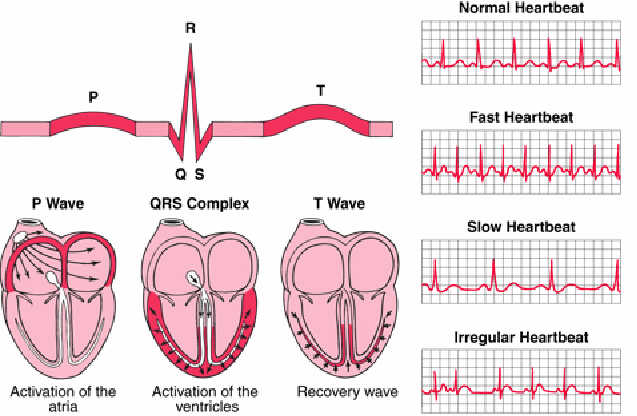An electrocardiogram (ECG) measures the voltage through the heart as it beats. moving through the heart during a heartbeat. The heartbeat is divided into parts, with each part being given an alphabetical label.
Each heartbeat begins with an impulse. This impulse activates the upper chambers of the heart (atria). The P wave represents activation of the atria.
Next, the spreads down down to the lower chambers of the heart (ventricles). The QRS complex represents activation of the ventricles.
The voltage then passes through the ventricles in the opposite direction. This is called the recovery wave, represented by the T wave.

Many abnormalities can be identified from an ECG, including a previous heart attack (myocardial infarction), abnormal heart rhythm (arrhythmia), an inadequate supply of blood and oxygen to the heart (ischemia), and excessive thickening (hypertrophy) of the heart's muscular walls.
Some abnormalities seen on an ECG may also suggest bulges (aneurysms) in weak areas of the heart's walls. If the rhythm is abnormal (too fast, too slow, or irregular), the ECG may also indicate where in the heart the abnormal rhythm starts. Such information helps doctors begin to determine the cause.
